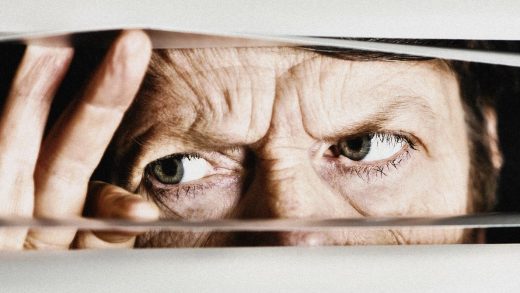:format(webp)/https://www.thestar.com/content/dam/thestar/entertainment/television/2023/05/02/why-gen-z-is-streaming-shows-like-game-of-thrones-whose-heydays-have-come-and-gone/game_of_thrones.jpg)
Last spring, after years of putting it off, I finally acquainted myself with the kingdoms of Westeros.
“Game of Thrones” was the most popular show in the world while I was in middle school, but by the time I reached the age when I could enjoy it, it was on its last season and receiving middling reviews. I decided I had missed the craze and let it be. But I always felt like I was missing out on something big, a dragon-infested milestone in the cultural zeitgeist.
So to Westeros I went. Still, it was weird.
If I’d wanted to satisfy a hunger for tense familial relations, I could have watched any number of shows that premiered last year: HBO’s “The Gilded Age,” a social drama set in the late 1800s, or Apple TV’s “Pachinko,” an adaptation of Min Jin Lee’s book, which I had read and loved. If I wanted a dose of the fantastical, I could have started “Stranger Things,” to catch up in time for its fourth season premiere in May.
Yet I chose to invest my time — more than 80 hours of it! — in a series that had its heyday during Obama’s first term.
My habits may seem like an outlier — Nielsen named 2022 the “year of original content” — but the numbers are more complicated than that.
Of the 10 most-watched scripted, non-children’s TV programs from 2022, seven shows released a new season last year, but only one show, Netflix’s “Wednesday,” was actually a launch. The other six (“Stranger Things,” “NCIS,” “Ozark,” “Grey’s Anatomy,” “Criminal Minds” and Canada’s “Heartland”) premiered years, if not decades, ago. Viewers might be keeping up with new seasons of series they already love, but not many of them are starting new shows.
That’s certainly the experience of many Gen Zs I know.
Dani Liwanag, a recent college grad living in Alberta, is currently catching up on “Breaking Bad.” But she said her all-time favourite show is “Bones,” a series whose 12 seasons have more than 20 episodes each.
That’s important for Dani. “I miss the old-school shows that had 20-plus episodes a season and came out with a new season twice a year,” she said. “Long production times and short seasons mean I get bored waiting between them. I’ve ditched a few shows due to waiting for production to wrap up!”
It’s a sentiment likely shared by others. Last month, HBO announced that the second season of “House of the Dragon” — the prequel to “Game of Thrones,” set to air in summer 2024 — will be cut from 10 episodes to eight. This means fans will wait two years for roughly eight hours of new content.
Daniel Konikoff, a course instructor at the University of Toronto’s Centre for Criminology and Sociolegal Studies, is currently rewatching the Tina Fey sitcom “30 Rock.”
“It frankly has a boggling number of jokes per minute,” said Konikoff, who added that the experience of watching a show also matters him.
He and his fiancée are into new shows like Rian Johnson’s “Poker Face” that he says are in line with the sensibilities of 30-minute laugh-a-thons like “30 Rock” and “Arrested Development.”
Is there a nostalgic yearning for the weekly cadence established by sitcoms?
“Nothing quite beats the week-to-week experience,” said Konikoff. “There’s something special about the anticipation that mounts ahead of a new episode, as well as the stability of knowing you’ll be seated for a ‘Sunday at 9’ time slot.”
But it’s not just nostalgia driving this return to the classics. It’s something I’ve been trying to put a finger on for the past year.
None of the people to whom I’ve spent years recommending “Succession,” my favourite contemporary show, have taken to watching it, but three have started and finished “Game of Thrones” based on my recommendation in just the past couple of months. When it was still airing, I had no luck gaining new “BoJack Horseman” fans, but I was able to recruit a fair number of “Arrested Development” watchers at the same time.
All four shows mentioned have incredible reviews and are well awarded, and they’re all accessible on major streaming platforms. So what’s really driving the draw to older shows?
I think I have the answer. In this golden age of television, we’re collectively deciding the true “classics” of television, pruning those that will be sidelined and cementing those that will live eternally as paragons of the medium.
It’s exciting. It’s something that, as a film watcher, I haven’t been able to do: the film classics, for the most part, have already been established. When I watch “Psycho” or “12 Angry Men,” I already know that I’m about to watch a seminal work of the medium. It shapes my experience and the way I engage with the film: I question “why” it’s a classic and search out the elements that make it timeless. The fact that television lacks this kind of conclusive canon offers us more agency in our viewing experience: we don’t ask “why?”; we ask “is?” — is this show a classic?
Ushered in by “The Sopranos” in 1999, this new age of TV was marked by the release of a significant number of high quality, critically acclaimed shows.
Two Rolling Stones Top 100 lists published in the past two years — one for cinema and one for television — illustrate TV’s modern momentum: no film released after the year 1997 made the top 10, while six TV shows from the new millennium did. Numbers help define this era, but we should strive to ask more abstract questions: what does it mean to be an active participant in this cultural movement? What role do we play, as individuals and as parts of friend groups, families and larger societies, in helping to shape the television canon?
In other words, how does a classic become a classic? It’s a weighty question, one theorized over by thinkers for centuries. T.S. Eliot famously stated that there are no English literary classics because the language is not mature enough (as opposed to Latin, in Eliot’s view). Goethe asserted that works are not classics because they are old, but because “they are powerful, fresh and healthy.” But perhaps the definition most relevant to us is one proposed by poet Mark Van Doren: “a classic is any book that stays in print.”
I wonder if my motivation in watching “Game of Thrones” — or, before that, “The Wire” — is the same one that drove me to watch “Citizen Kane” and to read “Wuthering Heights.”
As we move away from analogue, the shows that are cemented as classics might be as reliant on their accessibility on streaming platforms as they are on every other factor: narrative strength, critical acclaim and viewer affection.
In recent years, many new shows were not granted physical releases, such as the final four seasons of “BoJack Horseman.” This means that if Netflix were to cease operations or if it were to remove the show from its platform, there would be no way to watch it officially. Knowing this, the recommendations we give out and the ones we act on feel more significant.
An ever-changing, ever-developing TV canon means we get to determine which titles outlive us: to do so, it’s as important to look back as it is to keep a pulse on the present.
JOIN THE CONVERSATION
does not endorse these opinions.


